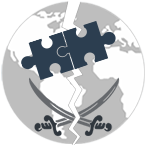“Unfolding the Future of the Long War”, a new study by the Rand Corporation, incorrectly categorizes the Muslim Brotherhood as a non-violent group that may serve as a “gateway” to more violent groups because of its non-violent nature. That the study has been influenced by “political correctness” can immediately be seen in the introduction which, consistent with guidelines issued earlier by the Department of Homeland Security, refuses to identify Islamic extremism or terrorism, instead choosing to talk about an ideology “laced with Islamic motifs and juridical justifications”:
..important for understanding the long war is a definition of the adversary. Because several of the adversaries that have attacked the United States have espoused an ideology laced with Islamic motifs and juridical justifications, this study examined groups operating within predominantly Muslim countries and organized them into categories based on an understanding of their motivating ideas and goals:
The report goes on to classify Islamic groups according to the following schema:
1 Doctrinaire jihadists, whether global in orientation or internally focused, who adhere to a version of Islam known as Salafi-jihadism. This interpretation of Islam rejects modernism and emphasizes the concepts of jihad (holy struggle) and takfir (declaring another Muslim an infidel).
2. Religious nationalist organizations such as Hezbollah and HAMAS that participate in the political process but that are also willing to use violence, sometimes against their own people, to dominate a particular community, region, or nation.
3. Other groups whose primary motivation is secular, such as communists, Arab nationalists, or Ba’athists.
In addition to these groups, other nonviolent organizations operating within predominantly Muslim nations can sometimes provide a “gateway” for entrance into more radical organizations.
Later on the study presents a slightly more elaborate schema, this time identifying the Muslim Brotherhood as a “non-violent” and, somewhat confusingly, also describing the Brotherhood as a group with “ideological tendencies” similarly to more radical ideologies while not “actively promoting the agendas” of the violent groups.
Encompassing these violent groups are other organizations within the civil society of Muslim states, representing Categories 5 and 6. These organizations are nonviolent, but some, such as the Muslim Brotherhood, may have ideological tendencies that are similar to more radical ideologies. Those who prefer the more extreme path will often find themselves stymied within the moderate organization and seek the more radical option. The framework places such “gateway” groups into Category 5, though it should be noted that groups like the Muslim Brotherhood do not actively promote the agendas of groups in the violent categories.
Without examining the question of whether or not such a complex phenomenon can ever be accurately portrayed by a four-cell matrix, once again the RAND study is again immediately suspect by placing Hamas (and Hezbollah) in a different category from the Muslim Brotherhood. In fact, Hamas is intimately related to the Brotherhood which is not surprising since the group had its origins in the Palestinian branch of the Muslim Brotherhood. As its own charter states:
The Islamic Resistance Movement is one of the wings of Moslem Brotherhood in Palestine. Moslem Brotherhood Movement is a universal organization which constitutes the largest Islamic movement in modern times. It is characterised by its deep understanding, accurate comprehension and its complete embrace of all Islamic concepts of all aspects of life, culture, creed, politics, economics, education, society, justice and judgement, the spreading of Islam, education, art, information, science of the occult and conversion to Islam.
In addition, as previous posts have discussed, Hamas is supported financially and ideologically by all parts of the global Muslim Brotherhood and documents revealed in the terrorism financing trial of the Holy Land Foundation demonstrated that the leadership of Hamas in the U.S. was part of the leadership of the U.S. Muslim Brotherhood. Therefore, regardless of whether or not violent “religious nationalists” properly belong in a completely separate category from “Doctrinaire jihadists”, Hamas and the Muslim Brotherhood cannot be so separated.
Also suspect is the notion that the Brotherhood serves as a “gateway” to more radical ideologies because of its non-violence. A more accurate way to portray the phenomenon is to observe that the Muslim Brotherhood is a kind of “incubator” for terrorism, helping to create a culture of grievance and conspiracy theorizing, the notion of a “War Against Islam” for example, that polarizes Muslim attitudes and attracts the kind of individual predisposed to later enter the world of Al Qaeda and other similar groups. In that sense, the Brotherhood directly facilitates both violence, as represented by Hamas, as well as being part of the milieu in which violence of all sorts can flourish.
The study raises an larger ongoing question which is the analytical short-sightedness of viewing Islamic extremism/terrorism solely through the lens of terrorism. This myopia leads to ignoring the real threat of a phenomenon such as the global Muslim Brotherhood, a threat which has multiple dimensions including political, economic, and social in addition to the threat post by terrorism itself. This narrow view also has generated policy recommendations such as the repeated suggestion that the U.S. should “engage” with groups like the Muslim Brotherhood.
